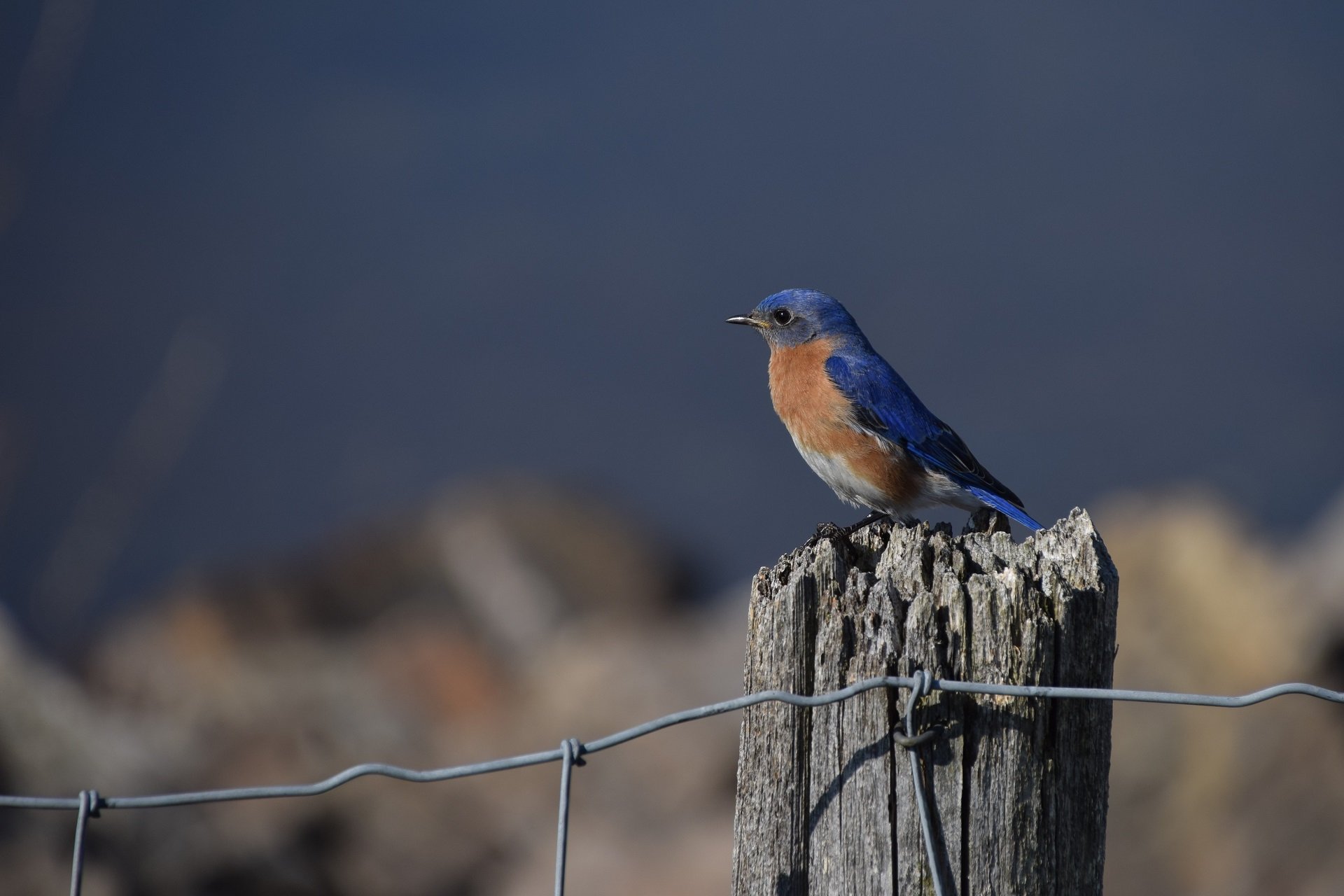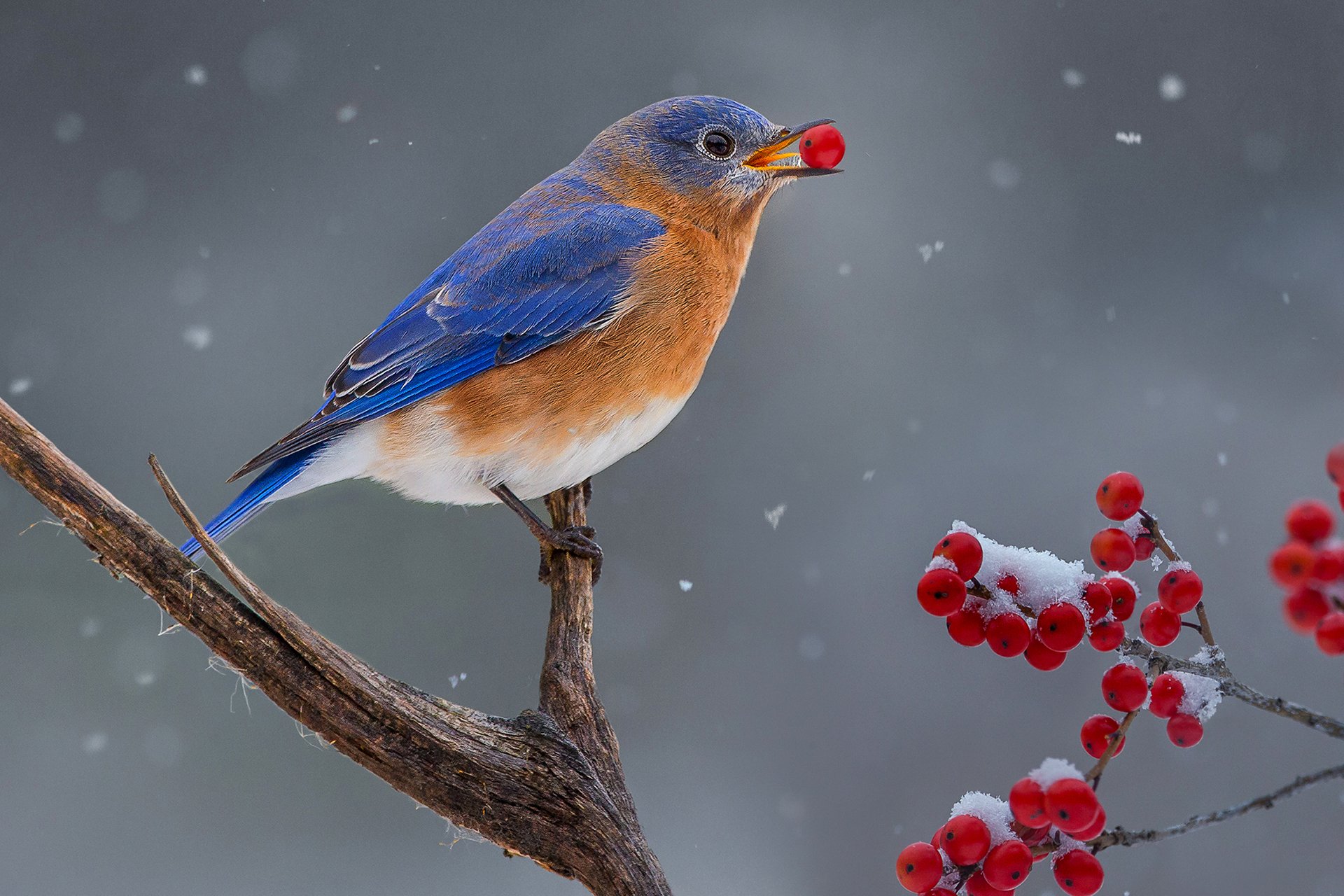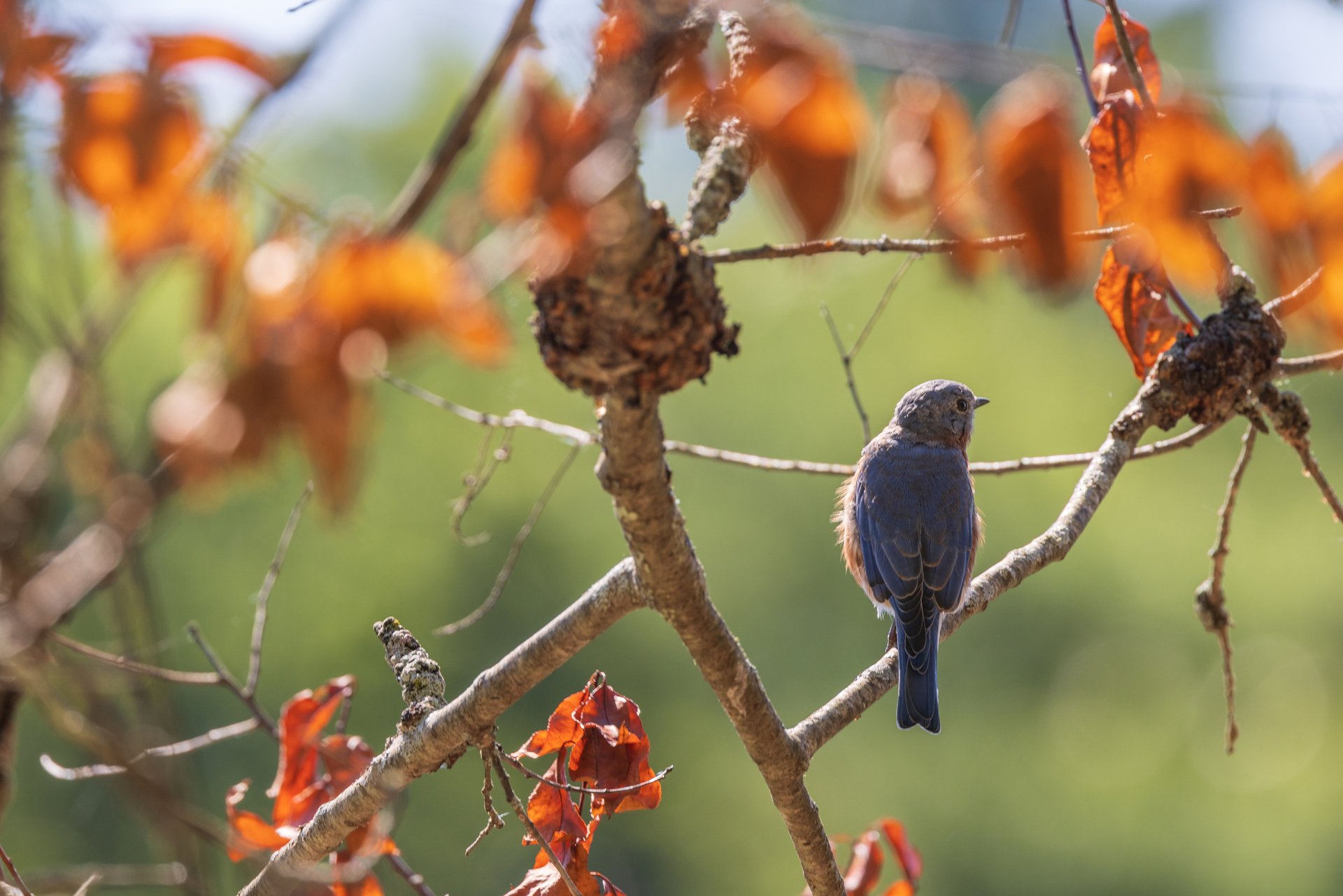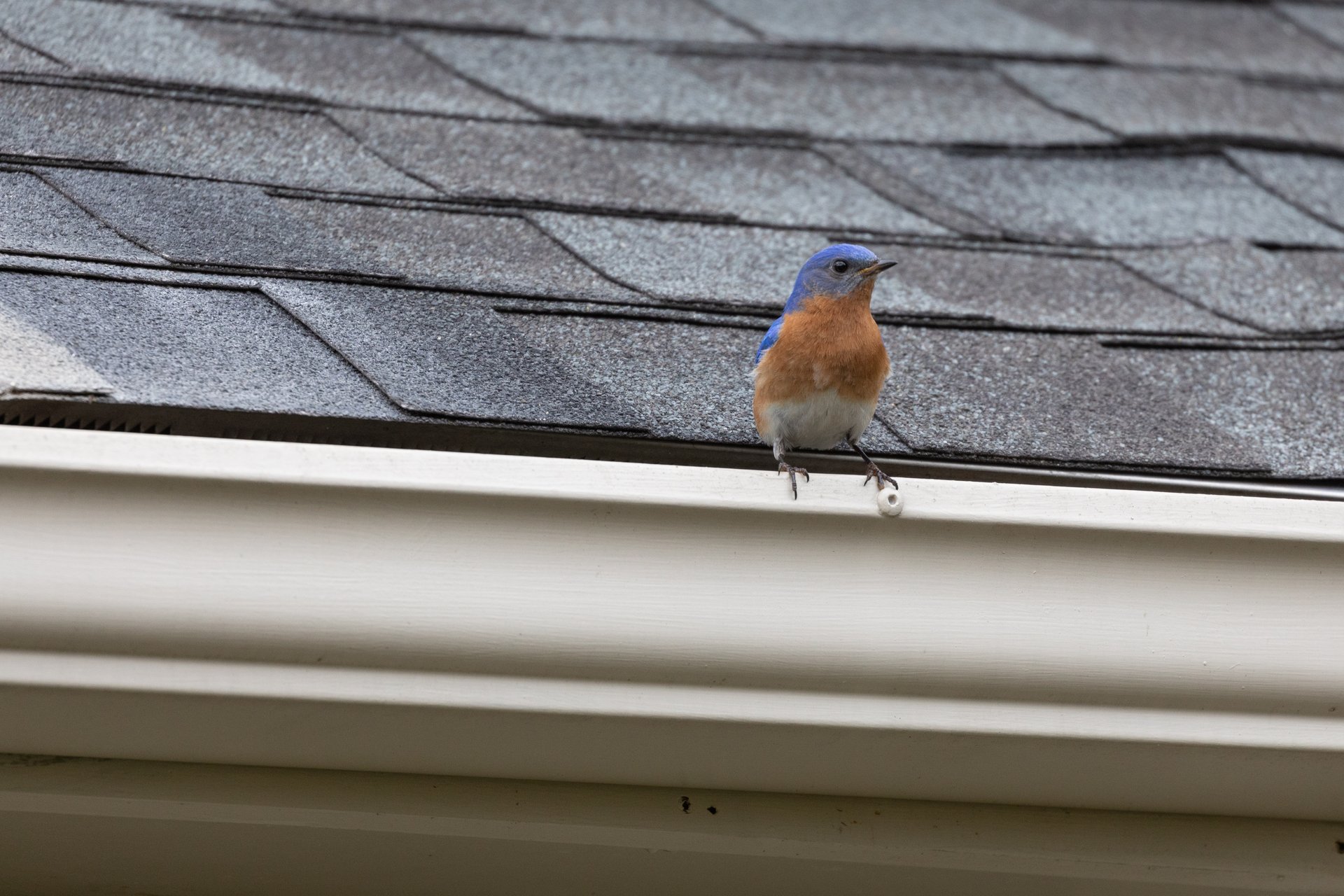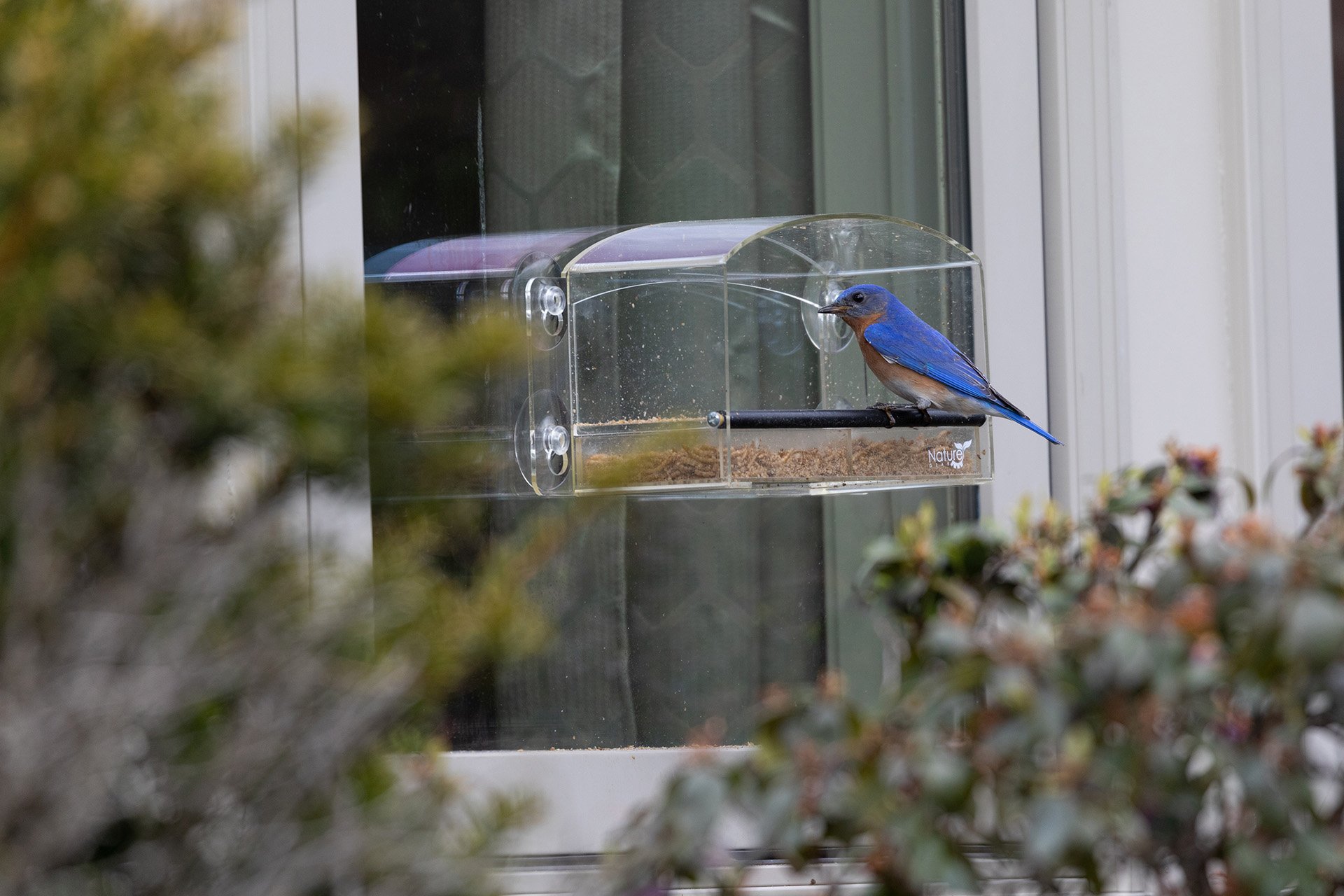Birds in Massachusetts
Eastern Bluebirds
Bringers of happiness in all seasons, Eastern Bluebirds are small members of the thrush family that inhabit fields and clearings throughout Massachusetts. Bluebirds were once rare in Massachusetts during the winter, but in recent years the number of winter bluebirds has been climbing.
How to Identify Eastern Bluebirds
Eastern Bluebirds are easy to identify thanks to their bright blue backs and brick-red breasts. Some females may be rather subdued in coloration, to the point where their backs are blue-gray and their breasts only faintly rusty, but the pattern of colors remains the same.
Bluebirds are smaller than Blue Jays, and they lack the pointed crests, black collars, and extensive white on the wings and tail that Blue Jays show.
Eastern Bluebird Behavior
In spring and summer, bluebirds nest in holes, either in trees or in birdhouses put up for their use. They mostly forage for insects on the ground, occasionally catching flying bugs on the wing. As the weather gets colder, many bluebirds flock together for migration. Those that remain in Massachusetts dine primarily on soft fruits, and a pair of bluebirds may remain on or near their breeding territory all through the winter.
Eastern Bluebird Call
Threats Facing Eastern Bluebirds
Competition with Invasive Species
House Sparrows, an introduced competitor for nesting cavities, began moving out of the cities in the 1870s and drove many Eastern Bluebirds from their nests. A harsh winter in 1895 nearly extirpated them from New England (Forbush 1929).
Throughout the twentieth century, the battle for survival continued as bluebirds competed with House Sparrows and European Starlings for nesting sites, faced landscape-level habitat changes, confronted adverse weather events, were contaminated by pesticides, and more. By the 1970s, the Northeastern population had declined by 90% (Petersen & Meservey 2003).
Eastern Bluebirds have recovered well in recent years and are stable or increasing both as breeding birds and wintering birds. Much of this recovery is thanks to concerned citizens who put up bluebird houses in their fields for these birds to nest in.
How You Can Help Eastern Bluebirds
Set Up Bluebird Houses
Bluebirds are often competing for their nesting cavity sites with invasive bird species like the House Sparrow and European Starling. They have suffered historic population declines but are rebounding in part thanks to concerned citizens who put up bluebird birdhouses.
You can help Eastern Bluebirds by setting up birdhouses near you. Find out how to set up birdhouses
How Mass Audubon is Supporting Birds in Massachusetts
Mass Audubon works at our wildlife sanctuaries and beyond to ensure that the nature of Massachusetts continues to thrive. By scientifically monitoring Massachusetts birdlife, Mass Audubon informs important conservation decisions and launches targeted initiatives to help at-risk species. In addition, fostering healthy habitats, supporting native species, and educating people about the importance of nature conservation is critical to our success. Learn more about our work
How You Can Support Birds in Massachusetts
Mass Audubon supports birds like the Eastern Bluebird every day, but we couldn’t do it without the support of our 160,000+ members.
Help support Eastern Bluebirds, and birds like them, by becoming a member today.
Upcoming Bird Programs
Wednesday Morning Birding
-
Newburyport and vicinity
-
Wednesday, December 31
9:30am-12:30pm
Adults
New Year's Day Birdwatching
-
Ipswich River Wildlife Sanctuary, Topsfield
-
Thursday, January 1
8:00-11:00am
Adults
New Year's Day Birdwatching
-
Joppa Flats Education Center, Newburyport
-
Thursday, January 1
8:00-11:00am
Adults
Stay Connected
Don't miss a beat on all the ways you can get outdoors, celebrate nature, and get involved.



